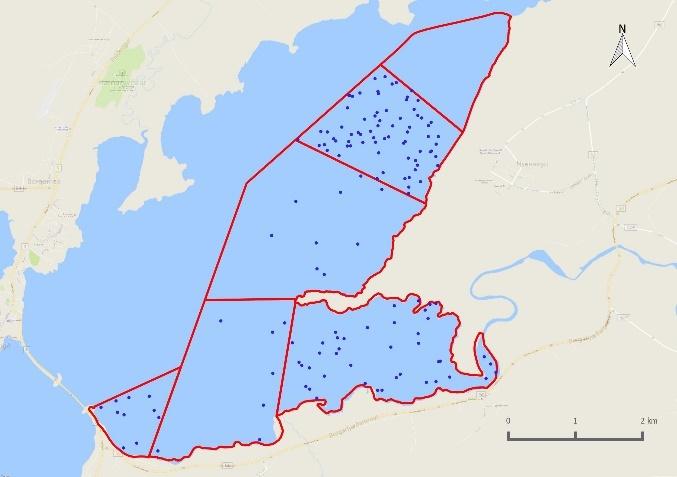
2 minute read
Executive Summary
This publication is part of a suite of surveys investigating bird abundance, diversity and seasonality in the Andakíll Ramsar site in Borgarfjörður, western Iceland (64°33'N, 21°46'W). Here, the estuarine part of the site was investigated. Greenland White-fronted Geese and breeding birds are covered elsewhere (Tierney & Stroud 2018; Tierney & Tierney 2020). In order to capture the arrival and departure dates for the migratory waterbirds, surveys were conducted in each week between 12th March and 25th October 2017. One low tide and one rising tide survey was conducted each week to determine waterbird distribution and abundance at low tide, when the intertidal areas are exposed and available to feeding waterbirds; and rising/high tide, when most birds are at, or moving to, their high tide roosting areas. All waterbirds and seabirds were recorded, as well as each bird’s behaviour and their use of different habitat zones. A total of 31 low tide and 30 rising tide surveys were conducted, and 43 waterbird and seabird species were recorded. Survey totals ranged from 51 birds (on 12th March) to 5,155 birds (on 7th August). Waterbird and seabird species diversity ranged from five species on 23rd March to 33 species on 8th May. Overall, the total number of waterbirds and seabirds recorded increased throughout March and April and then remained relatively constant until the end of June, when the numbers doubled. Waterbird and seabird numbers declined throughout September until surveys ceased at the end of October. The number of birds recorded during low tide surveys was generally higher than during rising tide surveys, especially for some wader species. This suggests that, for some birds, the site is important for foraging during low tide, and roosting refuges outwith the Andakíll Ramsar site are used during high tides. High tide roost location, size and species composition was investigated. A total of 37 roosts were identified, and 12 of which were used consistently or by relatively large numbers of birds. Species accounts are provided for 21 wildfowl, 12 waders, 10 seabirds and White-tailed Eagle. These accounts present: weekly abundance; site distribution maps (at low tide and rising tide, and during spring and autumn); and a summary of the proportion of time spent feeding or roosting at subsite level. Low levels of anthropomorphic disturbance were observed. This work represents an unprecedented level of information on the diversity, abundance, distribution and seasonality of the waterbirds and seabirds in the Andakíll Ramsar site throughout almost the entire period of the year when there are waterbirds present. However, it is recommended that some form of repeat surveys are conducted, ideally at regular intervals. These data are potentially useful for conservation casework and research purposes, but should be considered as a baseline, upon which further projects can be built. 4 | Page










